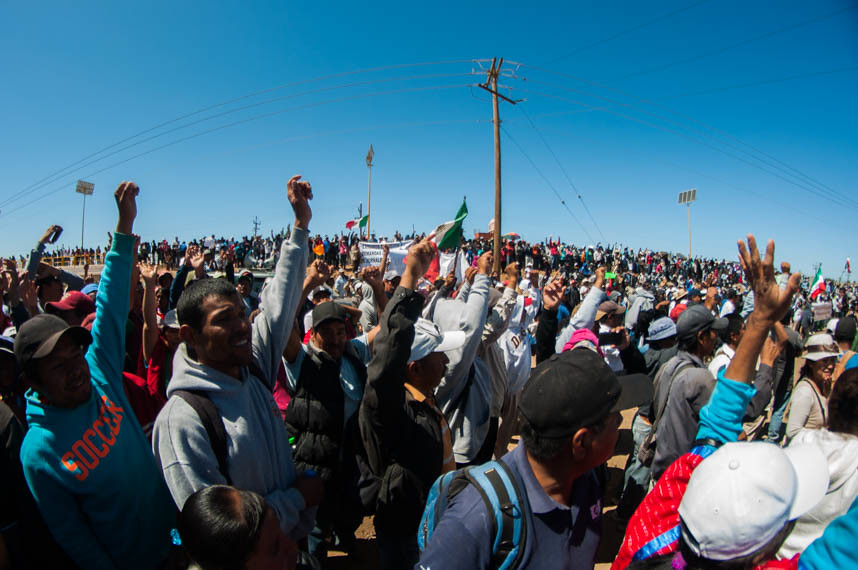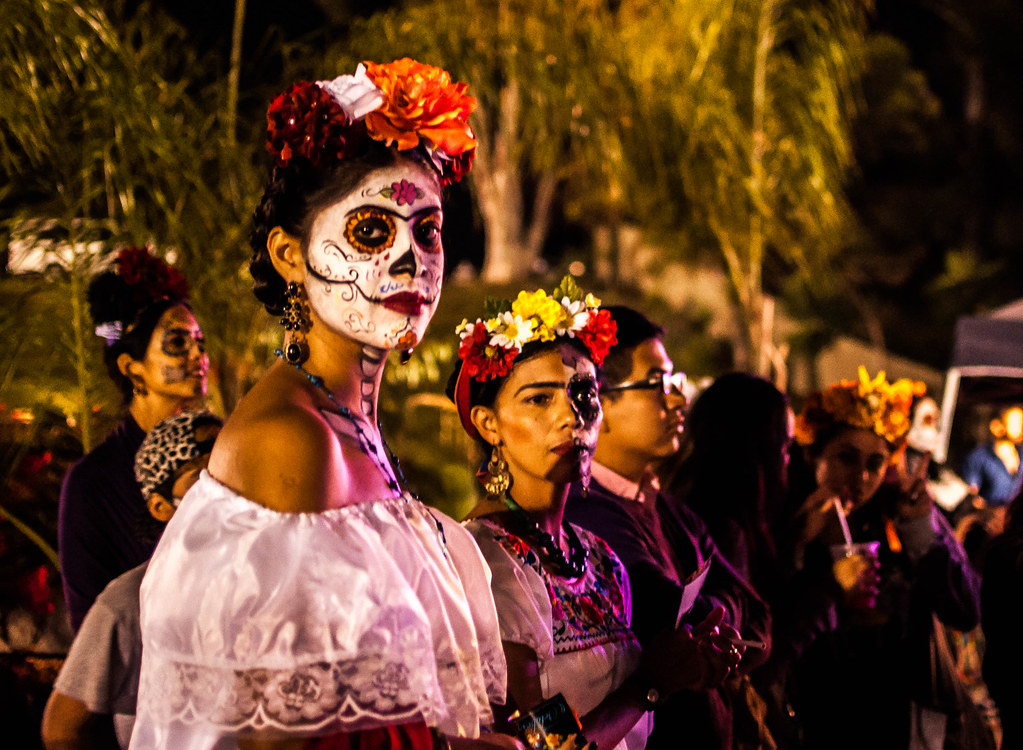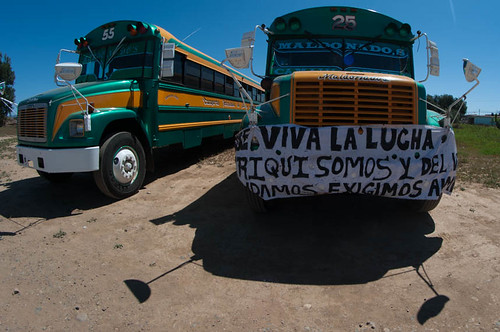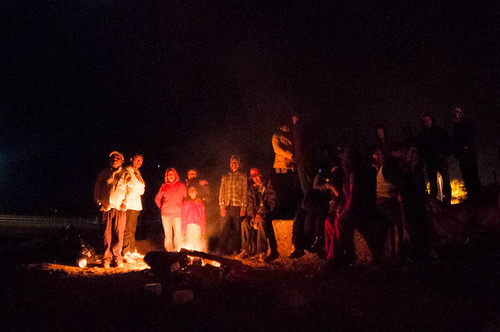I originally wrote this piece in 2014 for the New York Times, but they didn't pick it up. I tried unsuccessfully to get it printed somewhere else to no avail, so I'm finally putting it up here.
Mark Lane started to get threats a few days after he took in the family. At first, they targeted his San Diego restaurant, writing reviews online, saying his food poisoned them. “Mark Lane needs a serious beating in front of his customers,” declared a Facebook user.
Lane had already stoked the ire of hate groups by starting a Facebook page calling for a boycott of Murrieta, California, a town that rocketed to the international stage in 2014 after protestors turned away immigrant children. He further inflamed it by taking in a family of Guatemalan refugees waiting for an immigration hearing. They uncovered his identity and put photos of his wife and sons on the internet, threatening to show up and kill him.
“Mudshark,” a voice on the phone hissed. “Go back to Mexico,” whispered another.
Lane, who is white with an olive-skinned, dark-haired wife from Mexico, was called a race traitor, and worse. “Happy white guy who helps brown people?” read a typical email. “How did a decent Southerner like you get so perverted?” People started to show up at his restaurant to lurk outside and snap photos of customers.
While the groups still threatening Lane come from the fringe, their rhetoric is straight out of the mainstream. The terminology used to separate and marginalize people based on country of origin or skin color is not just the work of a few lone-wolf racists – it is the basis upon which the entire concept of border security has been built.
Southern California is peppered with dozens with gun shops. You can walk in, get a quick lesson on the right guns and ammunition for you, and then find bulletin boards – online or off – with information about your pick of militia groups. Many of those have connections to the Minutemen or other, more fringe groups. All of them talk about patriotism and the necessity of guarding the border. Many are filled with code words and dog-whistle language about illegals, gangbangers, thugs, and disease-carrying foreigners.
This is no accident. "California has historically been a cauldron of racial inequity in the United States,” said Kelly Lytle Hernandez, an author and border historian at the University of California, Los Angeles. “We are much more familiar with the narrative of the South in particular, but California has long been at the center of immigrant exclusion and border security, and those have always circulated around race and exclusion.”
The American Dream did not start out as a melting pot, she said. “Border security” as it is known today has been discussed since the beginning of the United States, but at first, it began as a discussion over who was white. “The general physical political ideal of the 19thcentury saw the United States as a massive body of land that was supposed to be a white settler society,” said Hernandez.
Discussion about border security in the latter half of the 19th century actually began because of Chinese immigrants, who came to California to do agricultural work and who became so populous they were accused of stealing agribusiness jobs. In 1862, the first immigration law, known colloquially as the “Anti-Coolie Act,” prohibited prostitutes, alcoholics, epileptics, criminals, and Asians from entering the United States.
Each new wave of migration was accompanied by fresh xenophobia – more so if the immigrants did not fit that white settler ideal. In the early 1900s, black American families, fed up with the Jim Crow, lynchings, and other legacies of the slave trade, began to move west. By the 1920s, more than a million African-Americans had moved out of the South. European and Russian Jews also arrived en masse at around the same time to escape increasing violence and discrimination in their home countries.
In 1924, at the behest of groups like the Ku Klux Klan, the United States passed the National Origins Act, which not only set a hard limit for foreign immigration in an attempt to preserve the ideal of American homogeneity, once again excluding Asians completely, but also created the Border Patrol to enforce it. As these riders were stationed along the U.S.-Mexico border, over time their focus narrowed to almost exclusively Mexican immigrants, deepening racial divides and inequalities along the border. During the Great Depression, nearly half a million Mexicans were rounded up and “repatriated,” some voluntarily, most forcibly.
Despite increasing tensions, migration to California continued, following market forces. Many people ended up in Los Angeles, thanks to the economic pull of its industrial centers and ports, which offered a chance at the middle-class dream to people who until then had not been allowed to have that opportunity. A second Great Migration of black Americans began in the 1940s, and Mexican agricultural and industrial workers found themselves in high demand there. The dream of white homogeneity, which never really existed to begin with, was overturned, and people started to leave. White flight had begun.
Whole swaths of counties close to Los Angeles catered to white flight, with realtors enacting “gentlemen's agreements” and “covenants” to not sell to any black families – or Jewish, or Mexican, or any families that threatened the neighborhood's whiteness. Shreds of these covenants still remain, like the hotly contested cross on a La Jolla hilltop, originally erected as a sign that the tony seaside neighborhood was a Christian one. Redlining, or housing discrimination, began in earnest in suburbs all over the region.
This all provided a fertile ground for neo-Nazi ideology to flourish after the end of the Second World War, aided and abetted by real estate agents who understood the wink and the smile they needed to keep their business selling tracts of southern California land as a white paradise. Wesley Swift, a Methodist preacher, started his own church, eventually called the Christian Identity movement or Church of Jesus Christ-Christian, which taught an extreme interpretation of Scripture that concluded that white people were the true children of Adam and Eve.
One of Swift's acolytes eventually created the Aryan Nations separatist group in the 1970s. By then, the framework that had allowed the creation of neo-Nazi groups to begin with was firmly in place in southern California. These new generations, spurred by the focus on immigration and protecting White America, now had God on their side, as well.
In the 1970s, the first militia groups made their way to the border.
The Civil Rights Movement triggered the uptick in white supremacy that began in the early 1970s, and while 9/11 created a surge of xenophobia from the South all the way to the tip of Alaska, it was sustained and fed by the wave of Iraqi immigrants that arrived in the United States soon afterward. During each wave, nativists and white supremacists went out to the US-Mexico border, and each quickly adopted the language of border security and anti-terrorism measures to justify their methods.
“In the post-WW2 era, David Duke's 1977 'Klan Border Watch' was the watershed moment linking U.S. white supremacist politics to vigilante border patrols, although it was largely a media stunt,” noted Spencer Sunshine, a fellow at Political Research Associates, a Massachusetts think tank devoted to studying the extreme right wing. “The Ku Klux Klan has a long history of organizing in southern California, going back to at least the 1920s.”
More hate groups, some of which called themselves militias or vigilantes and seemed to see themselves as the nation's protectors, sprang up in California's segregated, yet increasingly diverse environment. Today, the state has nearly 80 organizations that are classified as “hate groups,” far more than any other state, and most of them are along the border. According to Mark Potok of the Southern Poverty Law Center, these follow a specific and trackable pattern.
“Hate crimes rise quite dramatically when neighborhoods begin to reach a tipping point racially,” Potok said.
Where that tipping point begins is up for debate. Some scholars say “white flight” begins when a formerly white neighborhood becomes around 25 percent non-white. Others say just one family of color moving in can spark hatred and violence.
What sociologists do agree on, however, is that how much money or education people do or do not have do not create the conditions that breed white flight, hate groups, or hate crimes. The overwhelming reasons are twofold: demographic change that threatens the homogeneity of the dominant group, and the history of a particular area.
Membership in white supremacist groups appears to be dwindling now for the first time since the late 2000s, the end result of different groups settling in and multicultural cities becoming the rule rather than the exception.
But they're still loud – voices of hate groups are amplified and organized by the Internet, Potok said, although he does not believe that the internet aids in recruiting people into white supremacist groups or militias.
“I think by and large people are not recruited into hate groups through a computer screen. Real recruitment into groups of any kind happen face to face, even in the age of social media,” Potok said, although there is evidence that existing beliefs are strengthened by the echo-chamber effect of websites such as the very active Stormfront.org.
After Mark Lane was unmasked as the moderator of the Boycott Marrieta Facebook page and nativist groups discovered he was aiding a Central American family, he and his business received threats and poor reviews. But Lane also received a tremendous outpouring of goodwill and new business from people who had not heard about what he was doing until hate groups blasted him, including people who visited his restaurant to shake his hand and tell him that his altruism and tolerance had changed their opposition to allowing refugees into the country.
Hate groups, at least the ones based on physical differences, will continue to dwindle as diversity becomes more mainstream, but until then, crimes based on hatred or fear of “the other” will continue as long as it remains a part of everyday American discourse.
In order to defuse the language of hate, California, along with every other state in the US, has to acknowledge and distance itself from its history of government-approved white supremacy.
Many have lamented that the language of hate has infiltrated contemporary border politics, but the truth is that it has been there all along.

-2.jpg)








-6.jpg)
-4.jpg)
-3.jpg)
-2.jpg)
-2.jpg)
-16.jpg)
-5.jpg)
-33.jpg)

-29.jpg)
-32.jpg)
-24.jpg)
-41.jpg)
-42.jpg)
-43.jpg)



-6.jpg)


